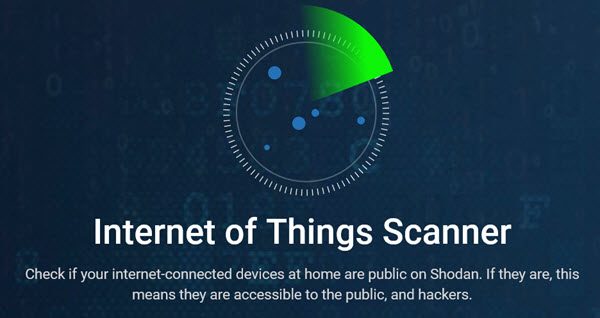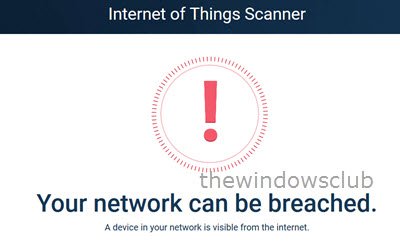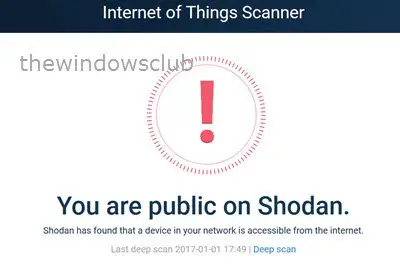By now, most of us must be familiar with Internet of Things and the dangers of IoT. Internet of Things is a network of physical objects such as household devices, smart TVs and security cameras that are connected to the internet. It is about smart appliances that have a computer chip at the core and are connected to the Internet for functioning. With almost everything connected to the Internet, it is not just the computers that are at risk of being compromised but all connected devices – and so it becomes imperative that IoT devices are properly secured so that it is not easily available to hackers.
We recently took a look at Shodan search engine that lets you search for Internet of Things or IoT devices to find out which devices are connected to the Internet, where they are located & who is using them. Thus the job of hackers becomes easier!
Now wouldn’t you want to know if any of your Internet of Things devices have been compromised and if they appear on this Shodan search engine? Well, if you want to know, then this Internet of Things Scanner from BullGuard can help you.
Internet of Things Scanner

Bullguard Internet of Things Scanner will check if your internet-connected devices are public on Shodan search engine. If they are, then it means that they are accessible to the public and hackers could well take advantage of this information and attempt to hack your device.
Once there, click on the Check if I am on Shodan button to start the scan. It takes just a few seconds. If you are not on Shodan, you will see a message – You are not public on Shodan.

Even though you are not public on Shodan, the devices in your network might still be vulnerable. Click the Deep Scan button to make sure you are not vulnerable. Clicking on the Deep Scan will list down vulnerabilities if any in your IoT device. But one thing to note here is that if a vulnerability is found, your device will get listed on Shodan.
If your IoT device vulnerable, you will see a Your network can be breached message.

And well, if a device on your network is found accessible, you will see a You are public on Shodan.

Now that should get you worried and you might want to take steps to secure your IoT device. For instance, if your Port 5357 is open, you may want to disable Network Discovery.
Visit iotscanner.bullguard.com to check if your IoT device appears publicly on the Shodan search engine.
How are IoT devices compromised?
The main source of IoT devices being compromised is the Wi-Fi router they are connected to. If you compromise your Wi-Fi router’s security, it will reflect on the IoT devices. Therefore, it is recommended to tighten the security of the Wi-Fi network at your home.
How do you ensure IoT devices are secure?
There are mainly two ways to ensure that IoT devices are secure at your home or office. First, you can check all the devices manually, find the log files, and identify the issue accordingly. However, if that is time-consuming for you, you can use the BullGuard Internet of Things Scanner.